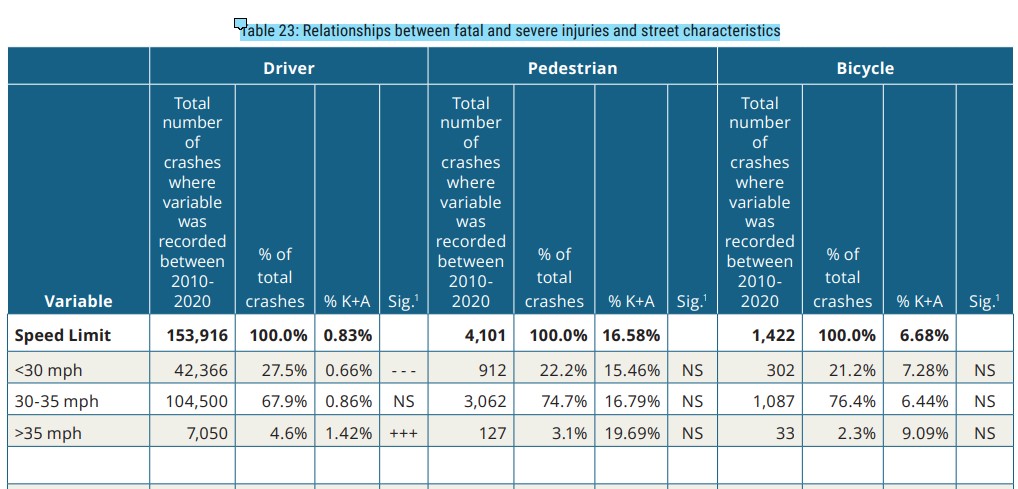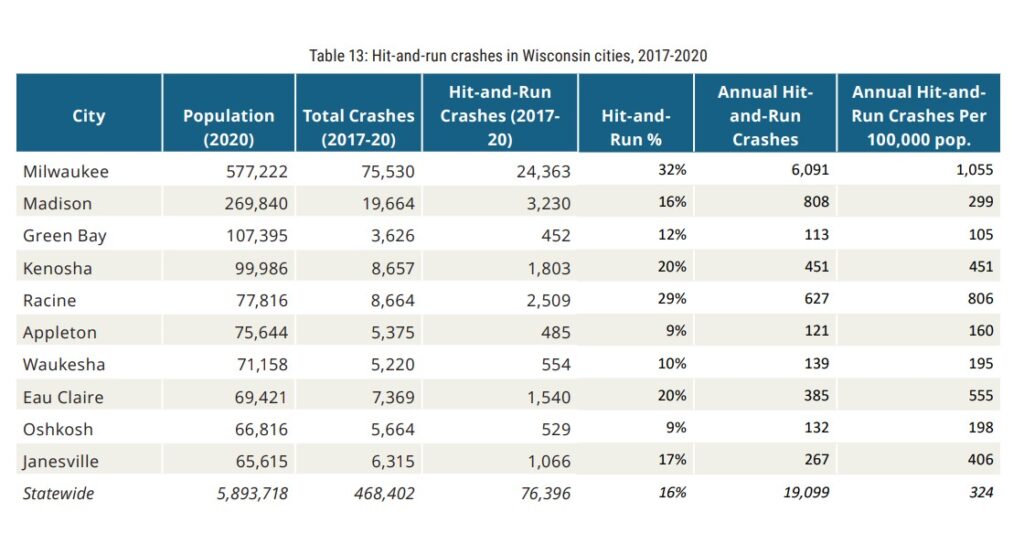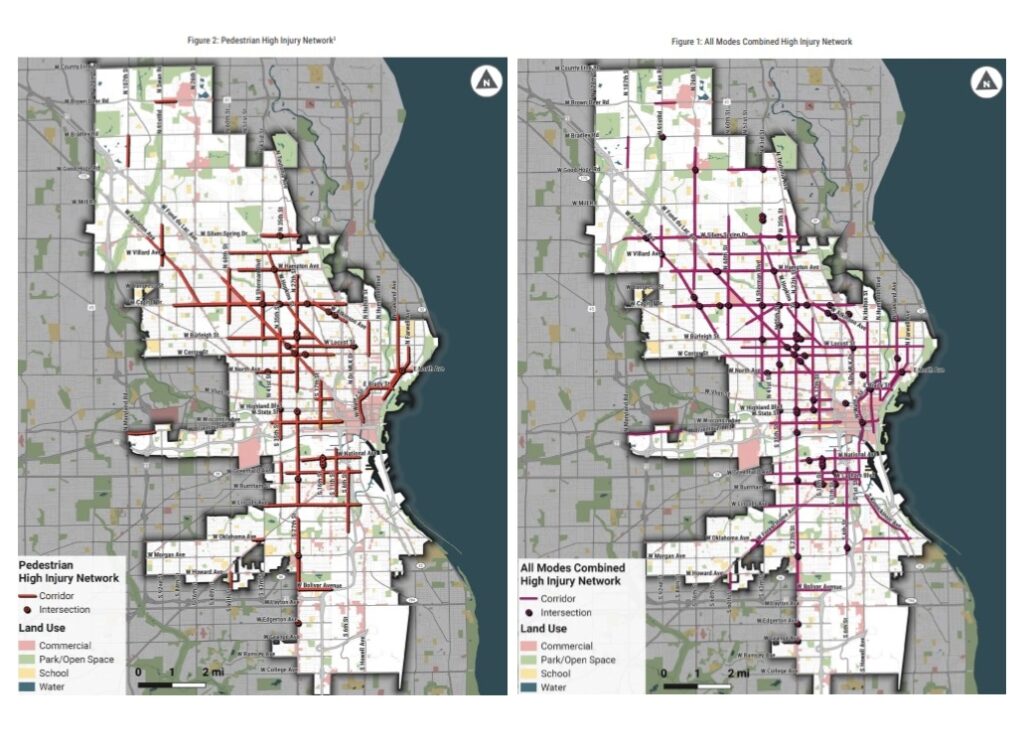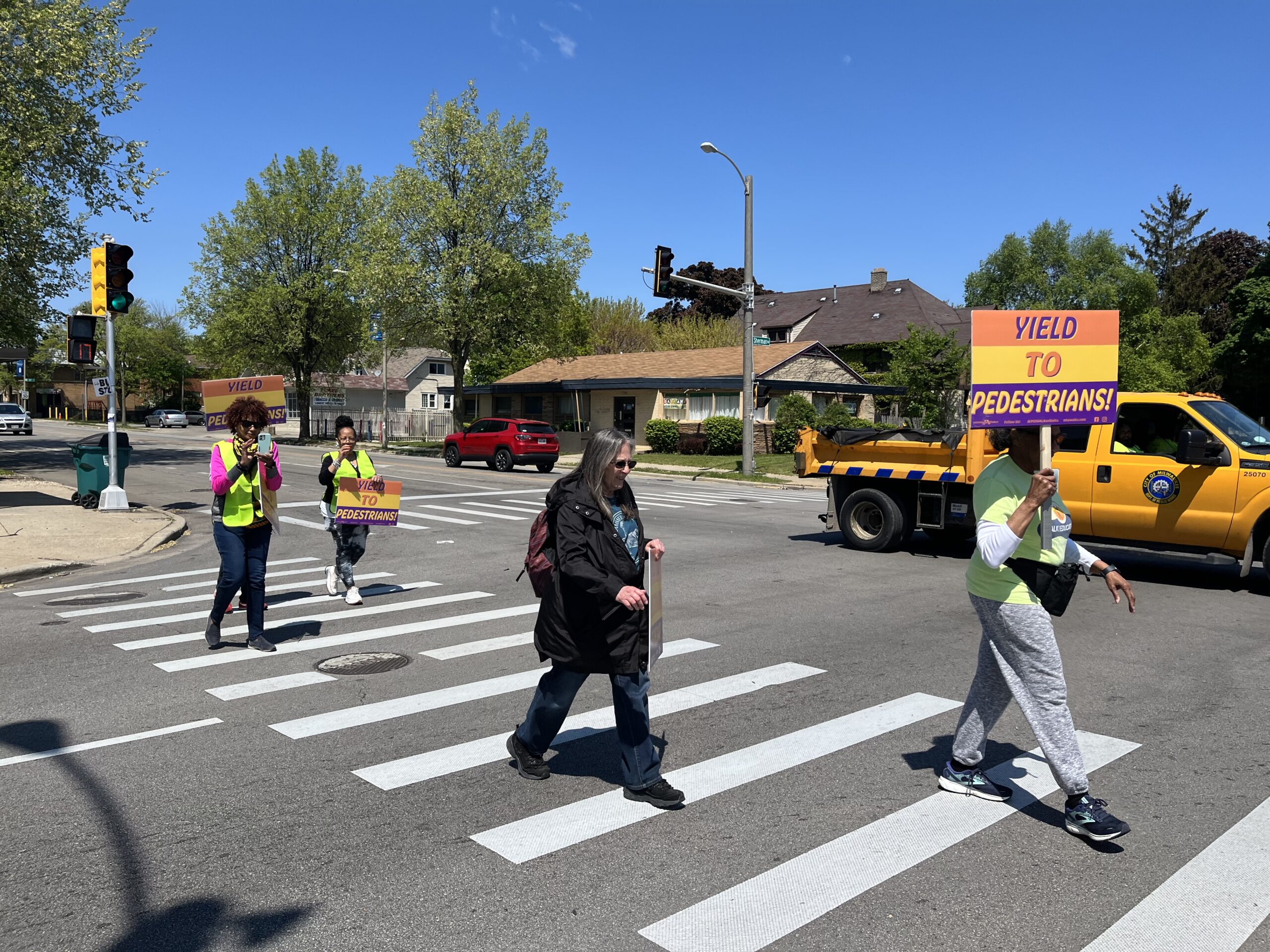Last month, the City of Milwaukee released a crash analysis report for 2022. The report tells an already-familiar story: Milwaukee, like many cities in the United States, faces a reckless driving epidemic that has led to rising fatalities for vulnerable road users. Pedestrians overall are at higher risk for severe injury or death in the event of a crash than drivers, and certain conditions raise that risk even further.

Between 2010 and 2019, 16% of crashes involving pedestrians resulted in severe or fatal injury. However, 56% of those crashes occurred between 2015 and 2019, which is a concerning upward trend (crash report p. 119-120). Additionally, certain factors increase the risk for pedestrians.

The highest overall number of crashes occur on streets with speed limits between 30 and 35 miles per hour, indicating that these streets and speeds aren’t designed for pedestrians, and are incompatible with safe pedestrian usage (report p. 93). Hit-and-run crashes are also especially dangerous for pedestrians. Drivers may leave a crash to avoid legal consequences, or they may not realize they’ve hit a pedestrian. Pedestrians involved in hit-and-runs then have to wait longer for medical attention, making injuries worse and raising the chances of fatality. Hit-and-runs are disproportionately common in Milwaukee: they occur at double the rate of hit-and-runs in Madison, and more than three times the state average (report p. 57-58).

Other factors that put pedestrians more at risk include:
- The time of day: crashes in low light or darkness result in more severe injuries
- The location of a crash (whether it takes place at an intersection or a midblock crossing)
- The involvement of alcohol or drugs in a crash.
Milwaukee did not begin collecting data regarding the race of pedestrians and bikers involved in crashes until 2021. Therefore, the report contains limited information about how a person’s race may affect the likelihood that they will be involved in a crash, or how likely that crash is to be severe (report p. 97). However, the report does note that crashes involving Black drivers are much more likely to be severe. This lack of data tells its own story: if a disproportionate risk exists for drivers, what kind of risk may exist for more vulnerable pedestrians?
The report also outlines steps that the city is taking to address the crisis. Milwaukee’s High-Injury Network (HIN), a map of street corridors and intersections with high numbers of severe crashes, is divided into individual projects that are scored on a set of characteristics, including a site’s traffic volume, whether it is located in a nonwhite census tract, whether it is on a pedestrian, bike, or vehicle HIN, and how many injuries or fatalities have occurred there. The higher a site scores, the higher priority it is for the city to address.

Left: Pedestrian high injury network, crash report p. 16. Right: All modes combined high injury network, crash report p. 12.
There are three strategies the city is taking with project sites. Rapid implementation projects are improvements that can quickly go into place and provide immediate benefit for the area. They include things like adding bollards or repainting a road to create bike lanes. Targeted capital projects are permanent improvements to very specific locations, such as a particular intersection, and include things like signal crossings or raised crosswalks. Street transformation projects, like targeted capital, focus on permanent improvements, but they are spread over a larger area, and aim for a more holistic transformation of a transit corridor.
It is vital to create a city that is accessible for cyclists, pedestrians, and public transit users as well as drivers. Milwaukee’s recognition of the reckless driving problem, and the steps being taken to address it, are steps in the right direction. Along with the continued efforts of communities working for safer streets, this is what moves the vision of a safer, more walkable Milwaukee towards reality.
Want to read the report for yourself? You can access it here.
